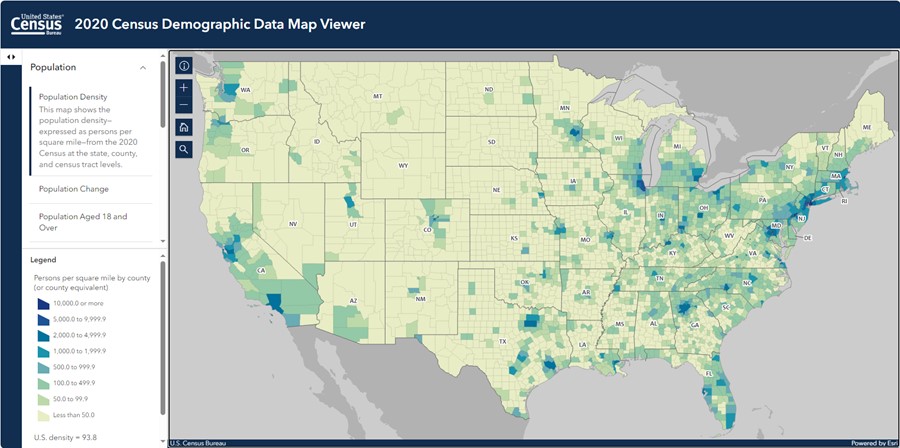2020 Census Demographic Profile
2020 Census Demographic Profile
On this page:
About the Demographic Profile
The 2020 Census Demographic Profile provides an overview of demographic and housing characteristics for a specific geography in a single data table:
- Subjects: Age, sex, race, Hispanic or Latino origin, household type, relationship to householder, group quarters population, housing occupancy, and housing tenure.
- Lowest level of geography: Census tract.
Which 2020 Census Data Product Should I Use?
Access Demographic Profile Data
View national and state data
Choose a State to View.
View data for counties, census tracts, and other geographies
Use the selection tool above to select the state where the county, tract, or other geography is located. This will take you to the Demographic Profile for that state. Once there, you can view data for a specific geography by using the Geography filter.
Questions?
Learn how to find, export, and download Demographic Profile data through this step-by-step guide.
Looking for more detailed data? Check out the 2020 Census Demographic and Housing Characteristics File (DHC).
Technical Documentation and Other Guidance
Data Confidentiality
As with all Census Bureau data products, the Demographic Profile data use disclosure avoidance methods to protect respondent confidentiality. To ensure that no one can link the published data to a specific person or household with any certainty, “statistical noise”— small, random additions or subtractions —was added to the data. The Census Bureau worked closely with the data user community to implement these protections.
The Census Bureau also released metrics to help data users understand the disclosure avoidance-related variability in the Demographic Profile. The 2020 Census is the first to be able to quantify this variability because it uses a more sophisticated approach for disclosure avoidance.
How new disclosure avoidance protections work
Disclosure Avoidance and the 2020 Census: The TopDown Algorithm
Why the Census Bureau Chose Differential Privacy
How the statistical noise affects the data
What to Expect: Disclosure Avoidance and the 2020 Census Demographic and Housing Characteristics File
2020 Census Production Disclosure Avoidance System Detailed Summary Metrics
Explore 2020 Census Data by Topic
Learn more about 2020 Census data through interactive visualizations, maps, America Counts stories, and more. Please note that many of these resources use detailed 2020 Census data available through the 2020 Census Demographic and Housing Characteristics File (DHC).
Other Ways to Explore the Data
Click the map below to view state, county, and census tract-level data on: population, race, Hispanic origin, families and households, housing, and group quarters.






